Key Takeaways: Giro di Lombardia
Breaking down how Tadej Pogačar destroyed all comers to win his fourth consecutive Lombardia and finish off one of the best individual seasons in the history of the sport
Sponsor Note: Thank you to RedWhite Apparel for supporting the newsletter during the 2024 season. 2025 packages are on sale now. Reach out to beyondthepeloton@substack.com to inquire about 2025 availability and price quotes.
After nearly five hours of racing over a series of never-ending climbs above the shimmering waters of Lake Como in Northern Italy on Saturday, Tadej Pogačar attacked and dropped all comers after his UAE team wound up the pace on the day’s hardest climb, Colma di Sormano, before soloing clear to finish off a historically great 2024 season by winning his fourth consecutive Giro di Lombardia and seventh career Monument. Behind, Remco Evenepoel, the only rider to finish within four and a half minutes of Pogačar, could offer up little resistance after being dropped by Pogačar and cresting the day’s longest climb a minute in arrears and continued to lose time on the descent and flat-ish run to the finish line. The win, which Pogačar accomplished with shocking ease, put the finishing touches on a season that could very well be the best of all time, considering the Slovenian superstar netted 25 wins across the calendar’s biggest events, an even more impressively small number of defeats and continued to check off major wins as he marches toward matching the best riders in the history of the sport.
To expand on my initial thoughts from Saturday after the race, I’ve broken down the key takeaways from the season’s final major race below:
Il Lombardia 2024 Top Ten
1) Tadej Pogačar (UAE Team Emirates) +0
2) Remco Evenepoel (Soudal Quick-Step) +3’16
3) Giulio Ciccone (Lidl-Trek) +4’31
4) Ion Izagirre (Cofidis) +4’34
5) Enric Mas (Movistar) +4’34
6) Pavel Sivakov (UAE Team Emirates) +4’34
7) Lennert Van Eetvelt (Lotto Dstny) +4’34
8) Neilson Powless (EF Education-EasyPost) +4’58
9) David Gaudu (Groupama-FDJ) +4’58
10) Xandro Meurisse (Alpecin-Deceuninck) +4’58
BTP's Fall Classics Coverage is brought to you by RedWhite Apparel®
RedWhite makes Long Distance Bibshorts and their goal is to become your Go-To bibshort supplier. RedWhite is laser-focused on bibshorts and doesn’t produce any other product.
RedWhite Apparel®’s signature bibshort, The BIB, contains a heat-molded pad that stays plush mile after mile. The BIB is the go-to option for riders doing AUDAX rides over 600 miles in length.
Get your pair at www.redwhite.cc (free worldwide express shipping)
Use their Sizing Helpdesk to get a personalised size recommendation
BTP Testimonial: The RedWhite Long Distance Bibshort was more than comfortable during a recent 5+ hour BWR gravel race
Race Notebook
169.3km-to-go: In the opening 100kms of the race, a few strong breakaway groups get clear, and eventually form a threatening breakaway at the front. With the group including multiple sets teammates, strong climbers like Antonio Tiberi, Wilco Kelderman, Dani Martínez, and big-race winners like Matej Mohorič, this is, at least in theory, a dangerous situation for Pogačar and UAE.
156km: Back in the peloton, UAE doesn’t seem rattled and simply places Jan Christen and Finn Fisher-Black on the front to keep the gap, now at 2’13, in check. The fact that UAE can burn riders of this caliber this early in the race shows just how deep their team is and why they are such a formidable opponent.
56.9km: Despite the breakaway’s gap getting out to over five minutes with roughly 100kms to race, UAE’s strong phalanx on the front, led here by Marc Hirschi, a rider who would be a contender for the win on any other team, easily chops it down to just over a minute heading into the critical 13km-long climb of Colma di Sormano.
53.9km: On one of the first few hairpins of the climb, Pogačar is sitting third wheel behind Adam Yates (leading) and Pavel Sivakov (following), while Remco Evenepoel is still buried back in the field. This means that as Sivakov is accelerating out of the hairpin, Evenepoel is still stuck in the apex of the turn and unable to follow. And with Pogačar pushing roughly 430 watts right here, Evenepoel has to invest a massive amount of energy and potentially even go above threshold just to get even with Pogačar before he even launches his attack.
51.6km: Evenepoel has pulled even a few kilometers later, but with Sivakov and Pogačar pushing hard at the front, he has already been forced to burn a major match just to get in position to follow Pogačar.
48.5km: Even with Sivakov still on the front, Pogačar senses that he has to attack now to build up enough of an advantage at the top of the climb to hold off the chasers and sees a chance to use the last few remaining breakaway riders as an obstacle to keep others from being able to follow his wheel (like a basketball screen). His initial acceleration, which peaks at around 1,000 watts (according to the Road Code provided power data), is so strong that nobody even attempts to follow.
48.4km: With Pogačar surging clear, Evenepoel, now just a few meters behind, is looking for others to chase with him instead of solely focusing on reconnecting with Pogačar’s wheel.
47.8km: Less than a kilometer later, Pogačar has enough of a gap that the chasers are no longer visible behind, and, judging by his ability to calmly tell his soigneur that he will take a bottle at the top of the climb instead of right now, he has settled into a pace roughly at, or slightly below, his threshold power (how hard you can ride for an hour).
46.5km: Just over 30 seconds behind, Evenepoel looks comfortable but is yet again more preoccupied with the two riders on his wheel, Lennert van Eetvelt and Enric Mas, sharing the work rather than with dealing with the five-alarm fire of Pogačar building up an insurmountable gap in the remaining four kilometers of climbing.
42.1km-40.7km: Pogačar crests the summit of the climb 1’08 ahead of the chase group, which is still led by Evenepoel.
38.7km-37.6km: On the descent, Pogačar calmly asks for a time gap from the camera moto, even as he extends his gap out to 1’15 over a hard-chasing Evenepoel, who has dropped Mas and Van Eetvelt on the descent.
9.5km: Heading into the final climb of the day, Pogačar has further extended his lead over the solo-chasing Evenepoel by another minute as he effortlessly ticks over a 100rpm cadence, which allows him to keep his power high without adding too much load to his muscle system.
7.3km: Behind, Evenepoel argues with a moto camera after asking for the time gap and apparently not liking the answer. Once again, the Olympic champion’s lack of poise in the heat of the battle is surprising.
Finish: After continuing to pile on the watts over the final 10kms, Pogačar crosses the finish line for his fourth consecutive Lombardia win and seventh career Monument.
Chase Group Finish: Over three minutes later, Evenepoel rolls over in second place, looking extremely defeated, as Giulio Ciccone takes a hugely impressive third place out of the chase group behind.
Three Key Takeaways
1) Tadej Pogačar is Currently Unbeatable in Climb-Heavy Races: After a dominant performance today, the 26-year-old has now won the last four editions of Lombardia, and with the largest margin of victory in a Monument since 1998 (and largest margin of victory at Lombardia since 1971). Combined with his now-trademark style of victory, where he has his ultra-strong UAE team ride the front to set up a long-range solo attack, not only is it clear that he is the sport’s top rider, but that he is as close to unbeatable as any rider can be.
Since the 2021 season, he has won seven career one-day Monuments, which gives him the most among active riders and 7th place all-time, tied with Tom Boonen and Fabian Cancellara, who racked up the same number of wins over nearly a decade.
The win also sees Pogačar retake the Monument-winning lead from the second-best active rider in terms of Monument wins, Mathieu van der Poel, who currently has six. The third-best total is two, shared by multiple riders (including Remco Evenepoel).
One main reason Pogačar has been able to rack up a staggering 25 wins in the 2024 season and be as close to unbeatable in Monuments as any rider in history is that he and his UAE team have perfected the art of leveraging his superiority as a rider.
For example, even as recently as two years ago, Pogačar was winning major races with attacks executed much later in the race or even by winning sprints from reduced groups (he won his first two Lombardias by outsprinting breakaway rivals). But, in the present, Pogačar is leaning on his strong UAE team to make the race so difficult that he is able to ride clear after a long-range attack.
This tactic, while simple, makes sense for the superstar since it benefits only one person, the strongest rider in the race. As long as that is Pogačar, it will be near-impossible to beat him, especially when the only riders capable of outsprinting him at the end of a hard race, Wout van Aert and Mathieu van der Poel, and hanging with him during a full-out attack, Jonas Vingegaard, aren’t focused on calendar-wide domination.
Looking at the power (estimated using my own power estimation formula) Pogačar was able to ride at while still in the wheels of his UAE team on the Colma di Sormano climb, which came five hours into a race with constant climbing, it becomes clear why he is so difficult to beat.
Pogačar’s estimated power for the entire Colma di Sormano climb:
445w for 30’52 (6.8w/kg)
Pogačar’s estimated power for the final 14 minutes (post-attack):
465w for 13’59 (7.2w/kg)
Being able to sit at roughly 420 watts (around 6.5w/kg) for the first half of the climb in the relative comfort of his teammate's wheels means that his competition is essentially on the limit before Pogačar uncorks a 7.2w/kg 14-minute attack.
2) Rival Teams & Riders Finally Produced Creative Tactics in an Attempt to Pressure Pogačar: As a response to Pogačar’s dominance, we finally saw some proactive tactics from rival teams by putting outside contenders into the early breakaway to, at least theoretically, put pressure on UAE.
For example, with riders like Dani Martínez and Antonio Tiberi up the road with teammate duos like Wilco Kelderman and Tiesj Benoot of Visma and Einer Rubio and Gregor Mühlberger of Movistar, there was at least a long-shot chance that things could have gotten out of hand.
But, even after their lead grew to over five minutes, Pogačar and his UAE team were able to methodically chop it back down to roughly a minute at the base of the day’s most important climb with 55 kilometers remaining.
With riders like Marc Hirschi, Adam Yates, and Pavel Sivakov available to take massive pulls on the front to reel in the early move, the breakaway was simply never an issue. For example, Sivakov was so strong that even after he set the pace that set up the winning move, he ended up in 6th place.
And, considering Pogačar was able to easily catch and drop the entire early move on the ensuing climb and put five minutes into the best-placed finisher from the move, Xandro Meurisse, it is safe to assume that they would have needed at least six minutes at the base of the climb, and roughly 12 minutes with 100 kilometers to go, even to have a chance of staying clear to contest the win.
So, while the strong early breakaway shows us that rival teams are willing to get creative in an attempt to counter Pogačar’s strength, it likely won’t make a dent as long as UAE remains such a strong team and top favorites aren’t getting into the move with teammates willing to sell out their pacemaking to build up a massive gap.
3) If Remco Evenepoel Wants to Defeat Pogačar, He Cannot Rely on the Chase Groups: While there may have been signs of outside-the-box tactics with the early breakaway, any creativity or positive racing from rivals was dead the moment Pogačar launched his winning move with 48 kilometers remaining. As soon as he went, there was no urgency, or even effort, from any rider other than Remco Evenepoel to reel him in, while the focus and energy in the remaining bunch went into fighting for the remaining podium places.
With this in mind, if Evenepoel wants to challenge Pogačar and/or get back to winning Monuments and Grand Tour road stages, he will have to work on his snap and get over any mental hurdles so that he can start following Pogačar’s initial move. Much was made of Evenepoel’s efficient steady-state climbing ability in his first few years as a pro, but if he wants to challenge Pogačar and overturn his nearly two-year one-day losing streak to him, he has to develop an ability to go over the threshold long enough to hold Pogačar’s wheel during this attack.
Despite repeatedly seeing that there is simply no movement or ability to work together to reel in Pogačar once he attacks, Evenepoel seemed once again angry and surprised that his chase group companions were unwilling to pull through. The only way to remedy this situation is to simply not be present in the chase group in the first place.
This isn't an impossible task for a rider at the level of Evenepoel. For example, in the first few minutes after the attack, Pogačar averaged roughly 470 watts to Evenepoel’s 440 watts, with Pogačar only averaging about 460 watts (according to my own calculation since the team-provided Road Code wattage data might have been slightly off due to UAE’s power meters being notoriously inaccurate), roughly a threshold effort for him, for the remaining 10 minutes of the climb.
However, once Pogačar had even just a slight gap on the chasers, this was all he had to push since once a rider like Pogačar gets a gap, a 30-watt output gap over the course of five minutes can turn into minutes by the finish line due to Group Two Syndrome (the chase group refusing to work together to chase down a rider that he is free to ride all-out to the finish line).
Pogačar likely attacked so far from the top of the Sormano climb, knowing that Evenepoel likely wouldn’t attempt to follow him and, instead, ride a steady pace behind, which meant that Pogačar needed a substantial runway to build up a gap big enough to hold him off in the final 40 kilometers.

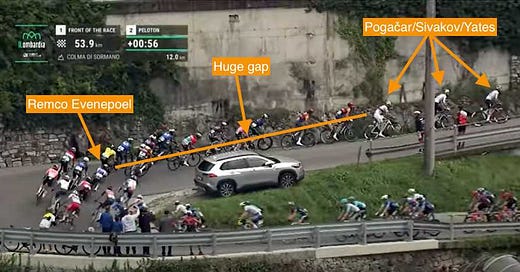






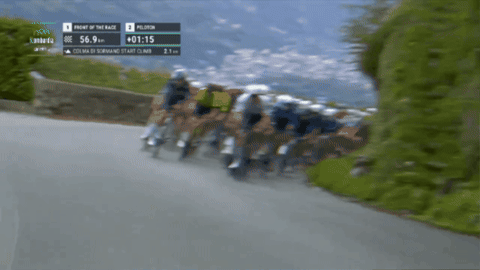

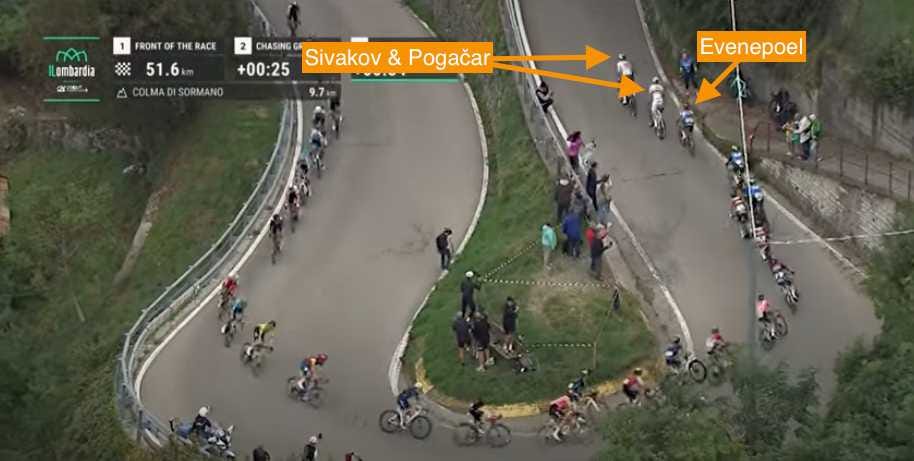
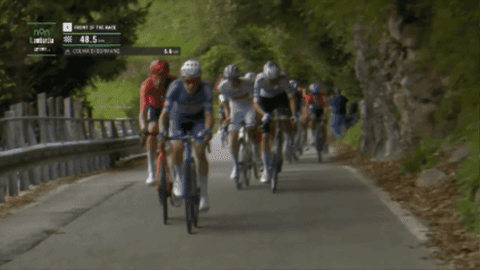
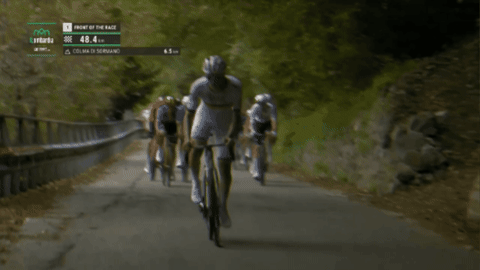

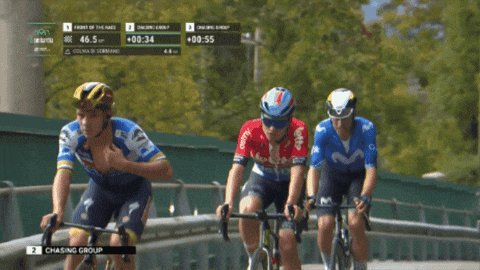

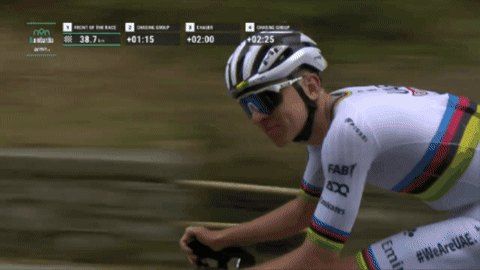
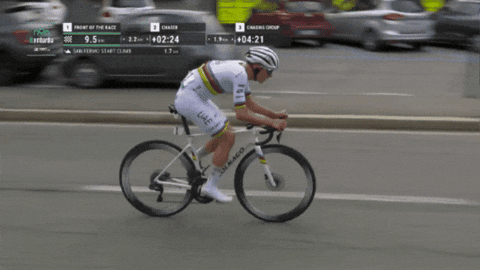
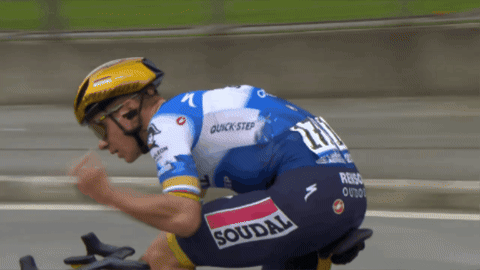


Spencer, thanks for a great season of analysis. You can't get the level of detail and insight you provide anywhere else.
Pogacar is indeed one of the best ever but (based on my past comments you know what's coming next), his amazing season is due, in small part, to the reduction of the fields at some races by injuries. My view is that if Wout van Aert had not crashed at the Giro he would have given Pogacar a run for his money at the worlds. Pogacar's TdF rivals, particularly Vingegaard, were not in top form because of crashes in the spring. As for Pogacar's classics dominance, van der Poel won two this year (and has now won rainbow jerseys in three cycling specialties). Here's hoping we see everyone in top form in 2025.
One minor, probably inconsequential point about Pogacar's attack with 6 KM to go on the climb...I don't know if it was intentional, but he launched at the precise moment Sivakov was overtaking the two breakaway riders. Pog seemed to use Sivakov and those two riders the way a basketball player would use a teammate to screen out defenders, causing Evenepoel to not be able to follow (even if he wanted to or had the capability to) for a second or two. That hesitation meant, even if he could match the 1000 watt surge, Evenepoel still had instantly lost the wheel. Game over. Was that instinctual for Pogacar, pure luck, or a sign of his keen racing sense?